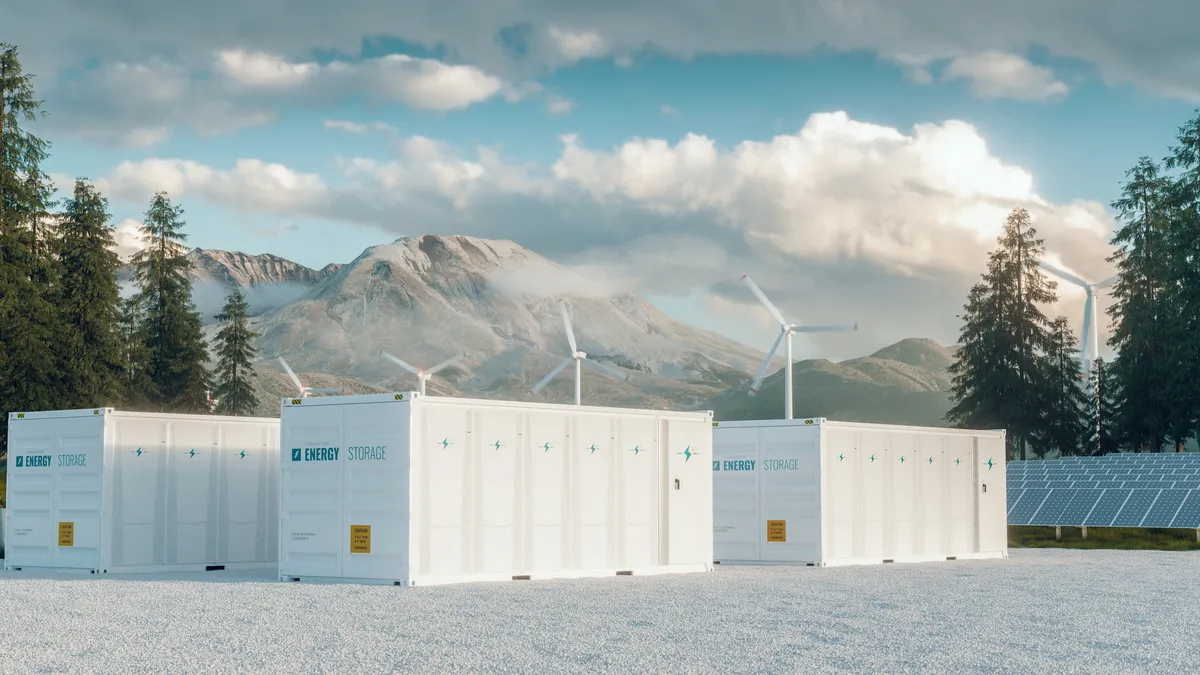Dive Brief:
- Battery capacity in the U.S. has more than tripled, to 6,702 MW, since the start of 2021, according to an Oct. 12 report by Zpryme, an Austin, Texas-based research company.
- Future planned capacity increased 35% from July to August, to 22,678 MW, according to the firm’s data.
- The top five states in August ranked by battery capacity were California, with 3,629 MW; Texas, 1,168 MW; Florida, 520 MW; Massachusetts, 196 MW; and Nevada 165 MW. “It’s been a huge priority for us,” said Patrick Woodcock, commissioner of the Massachusetts Department of Energy Resources. As a smaller state, Massachusetts has relied on behind-the-meter batteries to boost its storage resources.
Dive Insight:
U.S. battery capacity has more than tripled since the start of 2021, with future planned capacity up nearly 6,000 MW in August, according to the report by Zpryme.
Ten operational battery projects were added in the U.S. in August, accounting for an additional 415 MW of capacity, according to the report, which analyzed data from the Energy Information Administration. Compared with July, cumulative operational battery capacity increased by 6.6% in August.
As of August, 376 battery projects were in operation, according to Zpryme. Non-cooling and heating plant independent power producers owned about 81% of battery capacity and utilities owned 19%.
Future planned capacity increased by 5,879 MW in August, the greatest gain in the 19 months since January 2021.
In all, U.S. operational battery capacity increased by 311% in August, from 1,631 MW in January 2021.
Zpryme also reported that in August, the top five battery project owners ranked by capacity were NextEra Energy, with 1,295 MW; Terra-Gen, 547 MW; LS Power, 450 MW; Broad Reach Power, 339 MW; and AES, 327 MW.
The U.S. is preparing for a major buildout of energy storage in response to clean energy mandates and most recently the Inflation Reduction Act. According to BloombergNEF, the federal law is expected to drive the development of an additional 30 GW/111 GWh from 2022 to 2030.
California and Texas were the giants in battery capacity, but Massachusetts – trailing far back – made it into the top five. Woodcock said two reasons explain why the state is among the top five.
The state has linked storage with solar projects since 2018, requiring projects of more than 500 kW to be paired with energy storage, he said. The regulatory requirement is part of the Solar Massachusetts Renewable Target, or SMART, program.
The Bay State also has incorporated storage into energy efficiency programs in commercial operations, he said.
Massachusetts utilities offer electric efficiency performance incentives for behind-the-meter active demand reduction, including battery storage. Customers installing batteries or other storage devices receive an incentive payment based on how much they reduce their electricity use during peak demand.
A 2018 state law established an energy storage target of 1,000 MWh by Dec. 31, 2025. Electric distribution companies are required to annually report energy storage installations no later than Feb. 15.
Increasing storage has “been a huge priority for us,” Woodcock said. Transmission growth has benefited large states, but Massachusetts has established a “nice niche” with behind-the-meter initiatives, he said.
The state Office of Energy and Environmental Affairs in July published a roadmap for emissions reductions targets, including cutting greenhouse gas emissions 50% by 2030 over 1990 levels.
Looked at from another angle, energy storage is growing. Corporate funding in energy storage companies soared in the first nine months of 2022, reaching $22 billion in 92 deals compared with $13 billion in 74 deals in the same period last year, according to a study by Mercom Capital Group. However, venture capital funding for energy storage companies fell to $4 billion in 73 deals in the first nine months of the year from $7.2 billion raised in 60 deals last year.
And 23 energy storage mergers and acquisitions were executed in the first nine months of 2022, eight more than in the same period last year.















